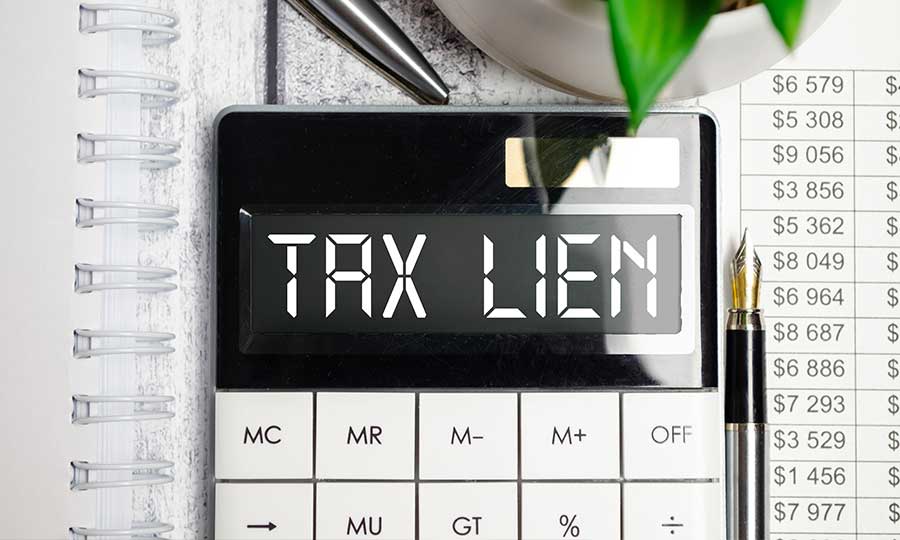An IRS tax lien is one of the most serious financial consequences of unpaid taxes. It can affect your credit, limit your financial freedom, and create a sense of uncertainty about your future. If you’ve received notice of a tax lien or are concerned about the possibility, understanding the process and your options is crucial. At PJN Tax Solutions, we help taxpayers navigate complex situations like these and find solutions that work for their unique circumstances.
What Is an IRS Tax Lien?
A tax lien is the government’s legal claim against your property—including real estate, personal belongings, and financial assets—when you fail to pay a tax debt. The lien ensures the IRS gets first priority over other creditors if you sell or refinance your assets.
How Tax Liens Work
- Notice and Demand for Payment: The IRS will send you a bill outlining the amount owed. This is the first step in the lien process.
- Failure to Pay: If you don’t pay the tax debt by the deadline, the IRS files a public document called a Notice of Federal Tax Lien.
- Impact on Assets: The lien attaches to all your current and future assets, significantly affecting your financial stability.
How a Tax Lien Affects You
The repercussions of a tax lien can be far-reaching:
- Credit Score Damage: Tax liens can appear on your credit report, making it harder to secure loans or credit lines.
- Asset Restrictions: Selling or refinancing property becomes difficult, as the lien ensures the IRS is paid first.
- Business Impacts: If you own a business, the lien may attach to its assets, jeopardizing operations.
Ignoring a tax lien will not make it disappear. In fact, the longer you wait to address it, the worse the consequences become.
How to Remove an IRS Tax Lien
Removing a tax lien is possible, but it requires understanding your options and acting decisively. Here are some common ways to address a lien:
1. Pay the Tax Debt in Full
The most straightforward way to remove a lien is to pay off your tax debt completely. Once the debt is paid, the IRS will release the lien within 30 days. While this may not be feasible for everyone, it’s the quickest route to resolution.
2. Set Up an Installment Agreement
If you can’t pay the debt in full, an installment agreement allows you to make monthly payments over time. While the lien remains in place until the debt is paid off, the agreement prevents further collection actions.
3. Apply for an Offer in Compromise (OIC)
An Offer in Compromise lets you settle your tax debt for less than you owe. If the IRS accepts your OIC, they will release the lien once the agreed-upon amount is paid. Keep in mind that not everyone qualifies for this program.
4. Request a Discharge of Property
If you need to sell or refinance a specific asset, you can request a discharge of property from the lien. This removes the lien from that particular asset, allowing the transaction to proceed.
5. Subordination
Subordination doesn’t remove the lien but allows other creditors to take priority over the IRS. This can make it easier to secure a loan or mortgage.
6.Withdrawal of the Lien
In some cases, you may qualify for a withdrawal, which removes the public Notice of Federal Tax Lien. This option is available if you’ve paid your debt in full or are on a direct debit installment agreement.
How to Prevent a Tax Lien
The best way to deal with a tax lien is to prevent one from being filed in the first place. Here are some tips:
- File Your Taxes on Time: Even if you can’t pay, filing on time helps avoid additional penalties.
- Communicate with the IRS: If you’re struggling to pay, reach out to the IRS to discuss payment options.
- Seek Professional Help: Working with a tax resolution expert can help you address your debt before it escalates.
Why Professional Help Matters
Navigating tax liens and IRS procedures can be overwhelming. A tax resolution professional has the experience and knowledge to:
- Negotiate with the IRS: They can help you secure favorable terms for payment plans or settlements.
- Protect Your Assets: An expert can advise on the best strategies to prevent asset seizures or other enforcement actions.
- Save Time and Stress: Dealing with the IRS can be time-consuming and frustrating. Let a professional handle the process for you.
Common Myths About IRS Tax Liens
There’s a lot of misinformation about tax liens, which can lead to unnecessary panic or inaction. Let’s debunk some common myths:
- Myth: A Tax Lien Means You’ll Lose Your Property Immediately. Truth: A lien is a claim, not a seizure. While it’s serious, you won’t lose your property unless the IRS enforces the lien through a levy.
- Myth: You Can’t Do Anything Once a Lien Is Filed. Truth: There are several ways to address and even remove a lien, as discussed above.
- Myth: Tax Liens Disappear Over Time. Truth: Liens remain in place until the debt is paid or the statute of limitations expires, which can take up to 10 years or more.
Take Action Today
If you’re dealing with an IRS tax lien or want to prevent one, the time to act is now. Ignoring the issue will only make it worse, but with the right help, you can resolve your tax problems and move forward with confidence.
At PJN Tax Solutions, we’re here to provide the guidance and support you need. Call us at (630) 415-5296 to schedule a free consultation. Let us help you take control of your tax situation and protect what matters most.

